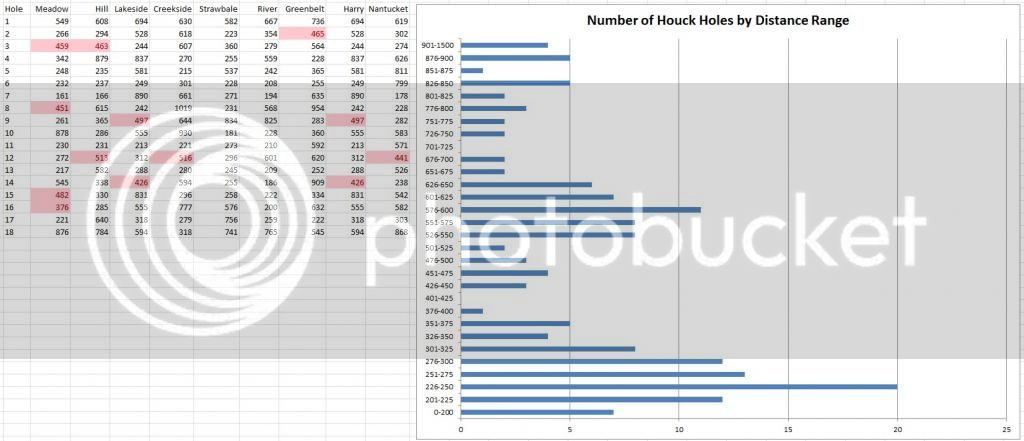OK, Gang. Time for some catchup. Thanks for hanging in there with me.
i'm pretty sure that's exactly what he's saying. what do you think about the idea?
So the question is, what do I think about this idea: "you want a hole where righties have to throw a sidearm, to compensate for all the holes where lefties are forced to throw sidearms."
I'm not a huge fan of holes that force anyone to throw a particular delivery. As I've said, I think that demanding (or expecting) that someone throw an occasional 150'-200' sidearm is OK, but we try not to demand more than that. So when I see a 200' hole where a righty's only chance for success is a sidearm, I can live with it, as long as there's a similar place where a lefty is forced to throw a sidearm. But a 300' hole that forces someone to throw the "other" delivery is something most designers would consider not acceptable, at least not today. Maybe that'll change.
I do believe that if you're asking it of one group of throwers, you can (and often should) ask it of the other. But the best scenario is not to have a bunch of holes that force lefties to throw sidearms in the first place.
as for course par, i have two questions.
do you think a par 6 hole is reasonable, presuming it was a good, well-designed hole?
The only par six I know of is at Highbridge, and I don't have a problem with it. Personally, I think that designing a great par five is so hard -- you need so much cooperation from the land -- that I can barely imagine being able to do all that and add an extra throw. I'd probably rather do a five and a three, or a four and a four. Second, as much as I love to innovate, there are some things I'm just traditional about, and a world of threes, fours, and fives feels right to me.
what would you think about this possible course:
(7) par 3
(5) par 4
(5) par 5
(1) par 6
total: 72
is that a decent distribution or is it too long?
The distribution is good, because it has enough par threes for me, and I'm sure you could talk me into the par six if it were a really good hole. I do think 72 is a lot at this point, but I wouldn't object to it just one its face. One place I'm getting concerned is tournaments. If you look at Selah and Trey for example, which average just about par 67, we're hearing from some players that two rounds a day is too much for them. (Of course, we're hearing from most players that two rounds a day is great.) So I wonder if we're on the edge. Two rounds a day on the course you describe is probably too much. But one round a day might be wonderful.
Thanks, Steve. I appreciate the questions.




